Etara-the place, where you were long time ago, but you still keep reminiscence o
Anita Valentinova, 04.09.2008

Etara is the town of Gabrovo in miniature in the past. As if you touch the pastime, reliving it again and again. The craftsman produces and sells his masterpieces on his own in Etara. In this way the visitors can observe the antique technology, original tools and have a talk with craftsmen. It is extraordinary opportunity to take handmade object with you. You will find yourself captured by the magic atmosphere. You are sitting peacefully, listening to the babble of the water and birds’ singing, mixed with children’s talking…You see people, having washed their carpets and then, in order to have them dried, they arranged them like colourful beads. You just enjoy people’s bustling and begin thinking about the small things in the real life. Etara is like a town from the period of Bulgarian Revival, but the difference is that people come and go, so as to others can come and this raises the feeling of cosmopolitism to this place captured by the past.
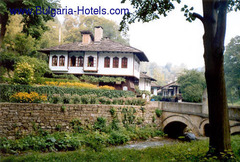 Sokolski Monastery- this was the aim of the journey, the place, we have never been to and which was expected to be discovered by us as well...Everything-the nature, silence, calmness and the magic of the monastery bewitched us.The monks Jossif and Agapii from the Troyan Monastery found their peace exactly here in one of the caves of the ancient rocky cloister in 1833. It was the beginning of a newmonastery, which soon became the biggest religious place in Gabrovo area.
Two monks chose the stone terrace in front of the Sokolova Cave for the place of the new monastery and excavated the first church in the limestone rock. The church is small and wooden and the first wooden house is built next to it. Everything was finished in 1833.
The craftsmen of Etara donated money and the next year a new temple was built. This is the first of several big churches, which Master Konstantin constructed in the 30s.
Present church is built in 1834, as the wall paintings of the inside and outside side were painted in 1862 by the monk Pavel and his son. The iconostasis was made in 1862 by masters from Triavna town and the icon in the temple is painted by the famous artist Hristo Cokev.
When this building was finished, a monastery school was opened in it. Later the famous Bulgarian Neofit Bozveli was a teacher there. A chapel was raised above the big cave behind the church in 1860. The cave and the chapel formed two-floor bone-vault.
Simultaneously, the fence of the rocky plumb was constructed. Its wavy crown, rambling over elegant arch shaped breaks, is one of the biggest architectural achievements of Bulgarian Revival.
Sokolski Monastery- this was the aim of the journey, the place, we have never been to and which was expected to be discovered by us as well...Everything-the nature, silence, calmness and the magic of the monastery bewitched us.The monks Jossif and Agapii from the Troyan Monastery found their peace exactly here in one of the caves of the ancient rocky cloister in 1833. It was the beginning of a newmonastery, which soon became the biggest religious place in Gabrovo area.
Two monks chose the stone terrace in front of the Sokolova Cave for the place of the new monastery and excavated the first church in the limestone rock. The church is small and wooden and the first wooden house is built next to it. Everything was finished in 1833.
The craftsmen of Etara donated money and the next year a new temple was built. This is the first of several big churches, which Master Konstantin constructed in the 30s.
Present church is built in 1834, as the wall paintings of the inside and outside side were painted in 1862 by the monk Pavel and his son. The iconostasis was made in 1862 by masters from Triavna town and the icon in the temple is painted by the famous artist Hristo Cokev.
When this building was finished, a monastery school was opened in it. Later the famous Bulgarian Neofit Bozveli was a teacher there. A chapel was raised above the big cave behind the church in 1860. The cave and the chapel formed two-floor bone-vault.
Simultaneously, the fence of the rocky plumb was constructed. Its wavy crown, rambling over elegant arch shaped breaks, is one of the biggest architectural achievements of Bulgarian Revival.
Probably the bone-vault and the fence are made by the builder Nikola Fichev. Undobtedly, he made on his own funds the famous Sokolska cheshma (Sokolska sink)in the yard of the monastery in 1868. This is the only one monastery, where instead of a church, a sink with eight spouts was constructed opposite the entrance. It is really big-5,4 meters high all together with the cross. The yielding stone falcons, sculptered in the corners of the sink are symbols of the Bulgarians hanged by the Turkish.
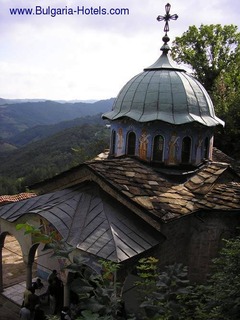 As most of the monasteries, the Sokolska cloister is closely related to the struggle of Bulgarians for freedom.
A conflagration destroyed almost the whole main building of the monastery. Later it was renovated on the base of old pictures and it is nearly in its authentic shape nowadays. It is said by the legends that the monastery existed in Middle Ages, but its present appearance originated by the Revival period.
As most of the monasteries, the Sokolska cloister is closely related to the struggle of Bulgarians for freedom.
A conflagration destroyed almost the whole main building of the monastery. Later it was renovated on the base of old pictures and it is nearly in its authentic shape nowadays. It is said by the legends that the monastery existed in Middle Ages, but its present appearance originated by the Revival period.
 Member of:
Member of:
















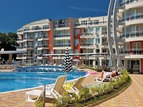

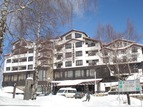


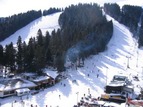


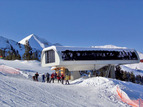


 Touroperator
Touroperator
